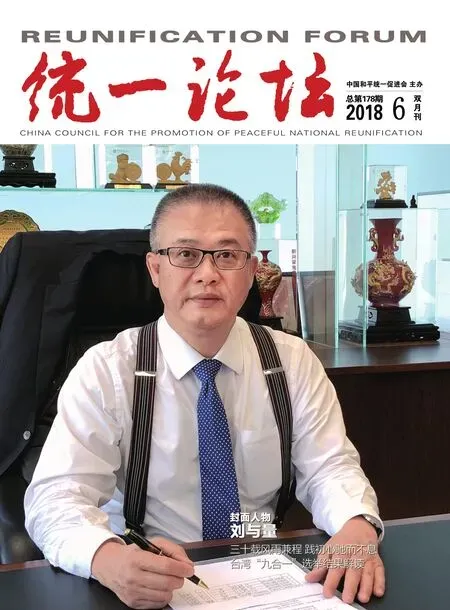民族区域自治制度在西藏的成功实践(七)
七、尊重和保护宗教信仰自由
中国宪法规定,宗教信仰自由是公民的一项基本权利。在今天的西藏,多种宗教并存,既有藏传佛教、苯教,也有伊斯兰教、天主教等。在藏传佛教内部,还存在不同教派。经过民主改革,西藏废除了政教合一制度,实行政教分离,恢复宗教的本来面目。多年来,中央政府和西藏自治区政府,充分尊重公民的宗教信仰自由权利,各种宗教、各个教派都平等地得到尊重和保护,正常的宗教活动和宗教信仰依法受到保护。
宗教活动得到尊重和保护。目前,西藏有各类宗教活动场所1787处,住寺僧尼4.6万多人。西藏自治区和7个地市均设有佛教协会,中国佛协西藏分会办有西藏佛学院、藏经文印经院和藏文会刊《西藏佛教》。藏族和其他各少数民族都按照自己的宗教传统过宗教生活,进行社会宗教活动。在西藏自治区,各大宗教的各种传统节庆活动正常进行,大型宗教活动如转神山神湖活动、萨噶达瓦节、展佛节、跳神节、朝觐等40多种群众性重大宗教节庆活动得以保护和继承。信教群众家中几乎都设有小经堂或佛龛。每年到拉萨朝佛敬香的信教群众达百万人次。在西藏到处可以看到善男信女悬挂的经幡,以及堆积的刻有佛教经文的嘛呢堆。各大寺院内常年挤满了磕长头、转经、朝佛的信教群众。西藏信教群众享受开展正常宗教活动的充分自由。为满足不同信教群众的宗教需求,目前西藏还有清真寺4座,天主教堂1座。这些宗教也依法得到了尊重和保护,依法依规开展正常宗教活动,与其他宗教平等和谐相处。
藏传佛教文化得到尊重和保护。中央和西藏自治区政府始终把藏传佛教文化作为中华民族传统文化的重要组成部分,一直以来给予有效保护,不断加强对宗教典籍的收集、整理、出版和研究工作。中央政府支持4000多万元,组织上百名藏文专家,历时20余年,完成了对藏文大藏经《甘珠尔》《丹珠尔》的校勘出版。20世纪90年代以来,藏文《中华大藏经·丹珠尔》(对勘本)《藏汉对照西藏大藏经总目录》《因明七论庄严华释》《慈氏五论》《释量论解说·雪域庄严》等陆续整理出版。已经印出《甘珠尔》大藏经达1490多部,还印出大量藏传佛教的仪轨、传记、论著等经典的单行本,供给寺庙,满足僧尼和信教群众的学修需求。宗教研究机构、高僧、学者的有关佛教专著,如《贝叶经的整理、研究》《西藏拉萨现存梵文贝叶经的整理》《西藏宗教源流与教派研究》《活佛转世制度》《郭扎佛教史》《西藏苯教寺庙志》《中国藏传佛教寺庙》《西藏佛教寺院壁画艺术》等,都正式出版发行。
寺庙得到维修和保护。20世纪80年代以来,国家每年都拨专项资金和黄金、白银等用于寺庙的维修、修复和保护。20世纪80年代以来,中央政府累计投入14亿多元对西藏文物和重点寺庙进行了大规模维修。国家资助专款670万元、黄金111公斤、白银2000多公斤及大量珠宝,修复了五世至九世班禅灵塔祀殿。为修建十世班禅灵塔祀殿,国家一次就拨专款6620万元、黄金650公斤。1994年,国家又拨款2000万元,继续修复甘丹寺。从1995年开始,中央财政通过国家重点文物保护专项资金,对西藏布达拉宫、罗布林卡、萨迦寺等列入国家重点文物保护单位名单的寺庙维修与保护予以积极支持。
活佛转世有序进行。活佛转世制度作为西藏宗教特有的信仰和传承方式,得到国家和西藏自治区各级政府的尊重,国家制定出台了《藏传佛教活佛转世管理办法》。1995年,西藏自治区按照宗教仪轨和历史定制,经过金瓶掣签,报国务院批准,完成了第十世班禅大师转世灵童的寻访、认定以及第十一世班禅的册立和坐床。据最新统计,西藏现有活佛358名,其中60多位新转世活佛按历史定制和宗教仪轨得到认定。
藏传佛教僧人学经制度不断完善。自治区制定出台《办好西藏佛学院分院的意见》《西藏佛学院学衔授予办法(试行)》,在北京和拉萨分别建有中国藏语系高级佛学院和西藏佛学院,作为藏传佛教高级宗教人才培养基地,系统招收培养藏传佛教教职人员。西藏60多座各教派寺庙开办有寺庙自办的学经班,完全按照传统习惯进行宗教学修和学位学衔的考核晋升。2005年开始,每年在北京中国藏语系高级佛学院举行藏传佛教“拓然巴”高级学衔考试和授予仪式,在大昭寺和拉萨三大寺进行格西“拉让巴”学位考试。截至目前,已有84名学经僧人获得了格西“拉让巴”学位,46名僧人获得了中国藏语系高级佛学院“拓然巴”高级学衔。(待续)
Successful Practice of Regional Ethnic Autonomy in Tibet(Ⅶ)
VII. Respecting and Protecting Freedom of Religious Belief
The Constitution stipulates that freedom of religious belief is one of citizens' fundamental rights.Today's Tibet is home to various religions, such as Tibetan Buddhism, within which exist different sects,Bon, Islam, and Catholicism. After democratic reform,Tibet put an end to theocracy, separating politics from religion and so restoring the latter's true signi fi cance.For years, the central government and the local government of Tibet Autonomous Region have fully respected citizens' right to freedom of religious belief,and given equal attention and protection to all religions and sects to ensure normal religious activities and religious beliefs are protected according to law.
Religious activities are respected and protected.Currently, there are 1,787 sites for different religious activities in Tibet, and more than 46,000 resident monks and nuns. Tibet Autonomous Region and seven cities all have Buddhist associations. The Tibetan branch of the Buddhist Association of China has set up the Tibetan Buddhist Institute, the Tripitaka Scripture Printing Lamasery, and the Tibetan Buddhism journal in Tibetan language. Tibetan and other minority ethnic groups lead their religious lives and carry out religious activities according to native traditions. In Tibet Autonomous Region, religious festivals are celebrated in the same way they always were. They include more than 40 major religious activities, such as pilgrimages to holy mountains and lakes, the Saga Dawa Festival,the Buddha Exhibition Festival, and the Lamaist Devil Dance Festival, all of which are protected and inherited. Almost all religious believers have scripture halls or shrines at their homes. Each year, millions of pilgrimages to Lhasa are made. In Tibet, prayer fl ags and mani stones are seen everywhere. All major temples are full of believers prostrating themselves before Buddha, spinning prayer wheels and paying homage to Buddha. Tibetan people enjoy full freedom in their conduct of religious activities. To meet the religious needs of different believers, Tibet has four mosques and one Catholic church. These religions are also respected and protected according to law and coexist in harmony with other religions.
Tibetan Buddhist culture is respected and protected. The central government and the local government of Tibet Autonomous Region have always regarded Tibetan Buddhist culture as an important component of traditional Chinese culture, offering protection and reinforcing the collection, compilation,publication, and research of religious classics. The central government set a budget of more than 40 million yuan for the revision and publication of the Tibetan Buddhist canons Kangyur and Tengyur, a 20-year project entailing the efforts of more than 100 Tibetan experts. Since the 1990s, the Tibetan-language Chinese Tripitaka - Tengyur (collated edition), A Tibetan-Chinese General Catalogue of the Tibetan Tripitaka, A Commentary on Tshad-ma sdebdun, Five Treatises of Maitreya, and Annotations on Pramanavarttika Karika - the Solemn Snowland have been successively compiled and published. More than 1,490 copies of Kangyur have been printed, and the ritual procedures, biographies, and treatises on Tibetan Buddhism have also been published to meet the study demands of monasteries, Buddhist monks and nuns,and lay believers. Treatises on Buddhism written and published by religious research institutes, eminent monks and scholars, such as Collation and Research of Pattra-leaf Scriptures, Collation of Sanskrit Pattra-leaf Scriptures Extant in Lhasa, Studies of the Origin and Development of Religions and Religious Sects in Tibet,Reincarnation System of Living Buddhas, History of Buddhism by Guta, Records of Tibetan Bonist Temples, Records of Tibetan Buddhist Monasteries in China, and The Art of Murals of Buddhist Monasteries in Tibet have been published.
Temples are maintained and protected. Since the 1980s, the state has allocated funds, gold, and silver to maintain, renovate and protect temples. More than 1.4 billion yuan has been spent on restoring Tibetan cultural relics and refurbishing key monasteries. A total of 6.7 million yuan, 111 kg of gold, 2,000 kg of silver, and a large amount of jewelry has been used to renovate stupas and prayer halls from the Fifth Panchen Erdeni to the Ninth Panchen Erdeni. The state budget to build these for the 10th Panchen Erdeni was 66.2 million yuan and 650 kg of gold. In 1994, the state allocated another 20 million yuan to renovate Ganden Monastery. Since 1995, the central budget has given active support to the maintenance and protection of monasteries listed as state key cultural relics units,such as the Potala Palace, Norbulingka and Sakya Monastery.
The Living Buddha reincarnation is proceeding well. The Living Buddha reincarnation is a succession system unique to Tibetan Buddhism, and is respected by the state and governments at different levels of the autonomous region, the state having issued the Measures on the Management of the Reincarnation of Living Buddhas of Tibetan Buddhism. Through traditional religious rituals and historical conventions like drawing lots from a golden urn, in 1995 Tibet Autonomous Region sought out and identified the reincarnation of the 10th Panchen Erdeni, and conferred and enthroned the 11th Panchen Erdeni,with the approval of the State Council. Tibet now has 358 Living Buddhas, more than 60 of whom have been confirmed through historical conventions and traditional religious rituals.
The system whereby Tibetan Buddhist monks learn sutras is improving since the autonomous region issued the Opinions on Building a Branch of the Tibetan Buddhist Institute and Methods of Awarding Academic Ranks in the Tibetan Buddhist Institute(trial). The China Tibetan Language High-level Institute of Buddhism has been set up in Beijing, and the Tibetan Buddhist Institute in Lhasa. Both recruit and train senior Buddhist teaching personnel. More than 60 monasteries of various sects in Tibet have their own sutra learning classes, and teach and confer degrees according to tradition. Since 2005, senior academic ranks examinations and degree conferring ceremonies have been held each year at the China Tibetan Language High-level Institute of Buddhism in Beijing, and degree examinations unique to Gelug held in Jokhang Temple and the three major monasteries in Lhasa. So far, a total of 84 monks have received senior academic titles in Lhasa and 46 in Beijing.(To be continued)

